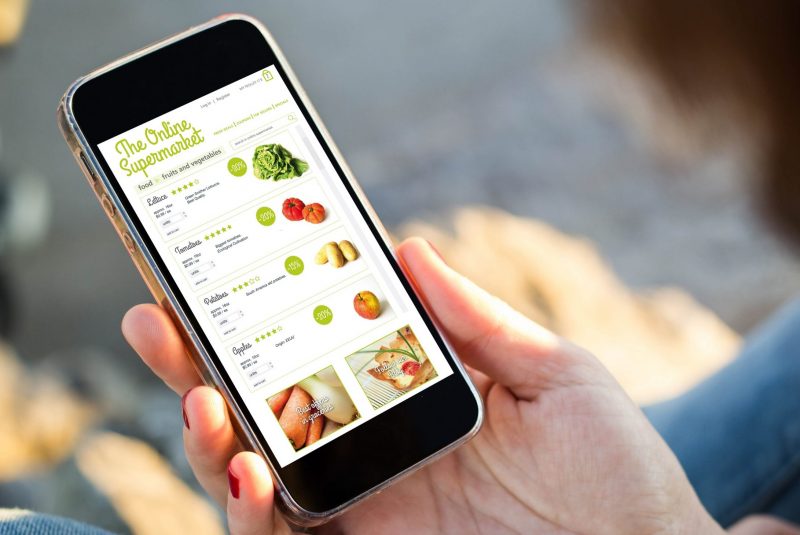
Advances in areas such as reusable crate design are transforming Europe’s home delivery and click-and-collect sector, says Adrian Dale, Managing Director at Polymer Logistics.
The rise in popularity of grocery e-commerce shows no sign of abating, as consumers switch their buying habits away from traditional bricks-and-mortar stores to embrace online shopping. These days, most major supermarkets across Europe have an online presence, while many niche online businesses offering produce from local suppliers have come to the fore.
The success of grocery e-commerce has primarily been down to convenience. Many consumers, particularly those with hectic lives, want to make the most of their spare time and find it easier to do their food shopping digitally. In terms of specific groups, young people in metropolitan areas are particularly heavy users of online grocery services. This demographic is comfortable with using technology such as smartphones to organise many aspects of their daily lives.
More recently, demand has been further accelerated as a result of the Coronavirus outbreak. The need for social distancing means a much broader range of people – many who might have shunned home delivery or click-and-collect pickup – are keen to avoid the supermarket aisle. This surge in demand will have a lasting effect post-Covid-19, as more people become accustomed to this new way of doing their weekly shopping.

Indeed, the market for grocery e-commerce is expected to continue growing over the medium-term. According to research by IGD, the European market for online groceries will expand by 66% by 2023, adding $21bn. That promise holds true in all of the biggest countries, with the UK, Germany, France, Italy and Spain all predicted to see strong growth rates. The challenge for retailers, then, isn’t a lack of potential customers, rather, it is in expanding grocery e-commerce in a cost-effective and efficient manner, while delivering the best possible customer experience.
Advances in reusable crate technology
In terms of delivering the online grocery experience, supermarkets and other retailers have established several different business models based around home delivery or click-and-collect pickup. However, irrespective of the route to market, all retailers have one requirement – the need for robust and well-designed containers into which the items can be placed, transferred to delivery vehicles and then transported to the consumer’s home or a local collection point. Selecting the appropriate container technology is a crucial decision as it can make a huge impact on every aspect of the delivery process.
For online shopping, the market for reusable containers is primarily dominated by foldable or nestable crates. These have to be lightweight, yet extremely durable, as they can be used for many trips in a single day, stacked in vans and shuttled from store to house or pick-up point. The design of such crates is often the result of a carefully considered research and development process, with engineers using software-driven techniques such as finite element analysis to execute the smallest refinements which, when taken as the sum of their parts, can deliver considerable performance advantages.

For example, in terms of ergonomics, simple enhancements such as bag hooks on the top rim significantly improve order fulfilment optimisation. Carrier bags can be hooked inside the crate, keeping them open, and therefore allowing for easier and faster goods picking by the customer fulfilment team. Handholds on all four sides of the crate also assist with more convenient handling.
Meanwhile, the use of a solid base ensures that any liquid spilt from a pint of milk, for example, can be contained, preventing spillage to the crates below and the subsequent damage to other orders. Also, crates are often designed with perforated walls to reduce weight and, when empty, they can be conveniently nested to minimise storage space.
The use of IoT for container tracking
At present, attrition is a significant problem in the grocery e-commerce sector, with some supermarkets losing as many as 1,500 crates a day. This adds up, over time, and can have a marked impact on the profitability of operations. The application of Internet of Things-based tracking systems to e-commerce crates can dramatically reduce losses and improve operational efficiency.
IoT technologies, based on smaller, cheaper and ever-more reliable sensors, allow for the tracing of all delivered crates, particularly the ones left on premises by the driver, enabling collection at a later point in time. Such technology can also drive behavioural change around the use of home shopping crates, establishing them as reusable and sustainable assets, rather than disposable boxes to be thrown away. Delivery drivers can be incentivised to ensure they keep track of stocks, returning them for use for other customer orders.
Moreover, IoT isn’t restricted to their ability to reduce attrition, as this type of technology can also be used to monitor food conditions. Sensors attached to home shopping crates make sure that perishable goods remain within specified temperature/humidity parameters while in transit, ensuring that they reach customers in optimum condition. This is an increasingly important consideration for many consumers, who are interested in the ‘farm-to-fork’ journey of their food as part of broader sustainability concerns.
Crate innovation going forward
So, where is crate innovation headed? What sorts of new technologies and trends might emerge as the market for home shopping continues to expand across most parts of Europe?
First, the design of customer-facing crates is likely to become a more important consideration. By definition, the act of online shopping takes the user away from the in-store experience and associated exposure to the supplier’s brand. For a company looking to ensure its brand values remain front and centre with its online customers, the appearance, finish and quality of reusable containers can no longer be an after-thought.

This means customised crates will have a bigger a role to play when it comes to the overall e-commerce experience and how the customer ultimately perceives the retailer. This is one of the reasons behind the growing use of more natural ‘wood-look’ crate designs, especially from niche businesses entering the grocery e-commerce sector and supplying, for example, organic produce boxes from local suppliers.
Future crate designs are also going to have to take account of the increased use of automated warehousing being pioneered by organisations such as Ocado. These facilities use intelligent robots for picking and placing to reduce labour intensity and increase speed and efficiency at the order fulfilment stage. Here, reusable crates that are strong enough to protect what’s inside and can communicate with warehouse systems will become essential to efficient operation.
Sustainability will also become an even greater consideration. While the shift to returnable packaging solutions such as plastic crates helps eliminate single-use cardboard, consumers still want to know that the thermoplastic polypropylene used to make crates can be disposed of in an environmentally sensitive manner. That means crate producers and suppliers will be expected to work together to establish effective recycling programmes such as schemes where old crates are bought back from retailers and ground up so that the base materials can be re-used in future crate production.
At Polymer Logistics, we have worked with many of the leading supermarkets across Europe to design and manufacture bespoke reusable shopping crates that meet both strict performance requirements and detailed branding specifications. Success in this sector is helped by the fact that we offer a full service that includes in-house R&D and manufacturing capabilities. This supports the ability to partner with customers in the retail sector to bring new ideas to market in a shorter timeframe.
